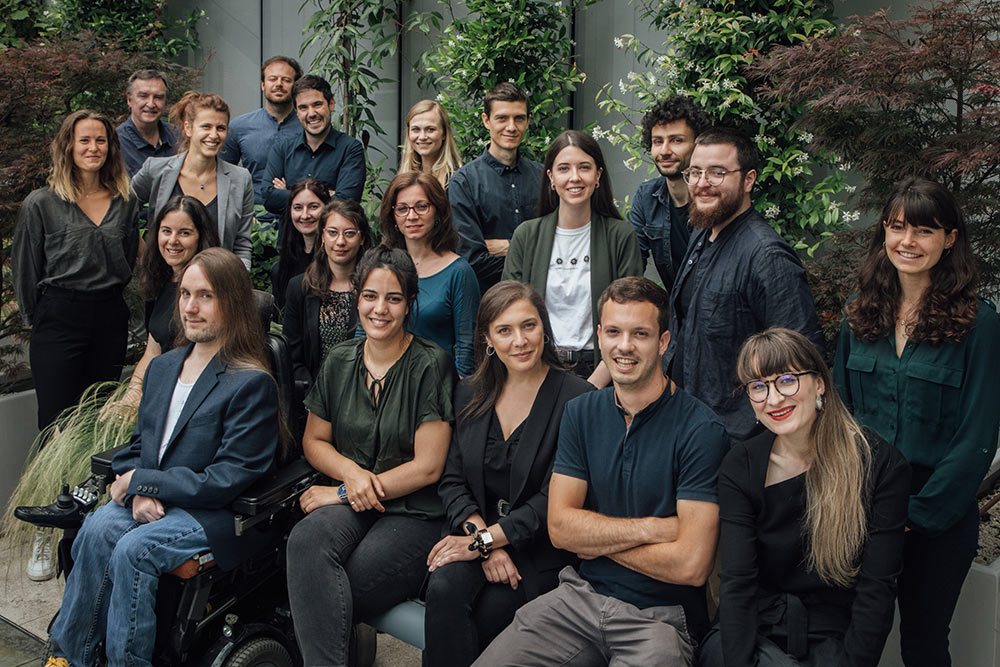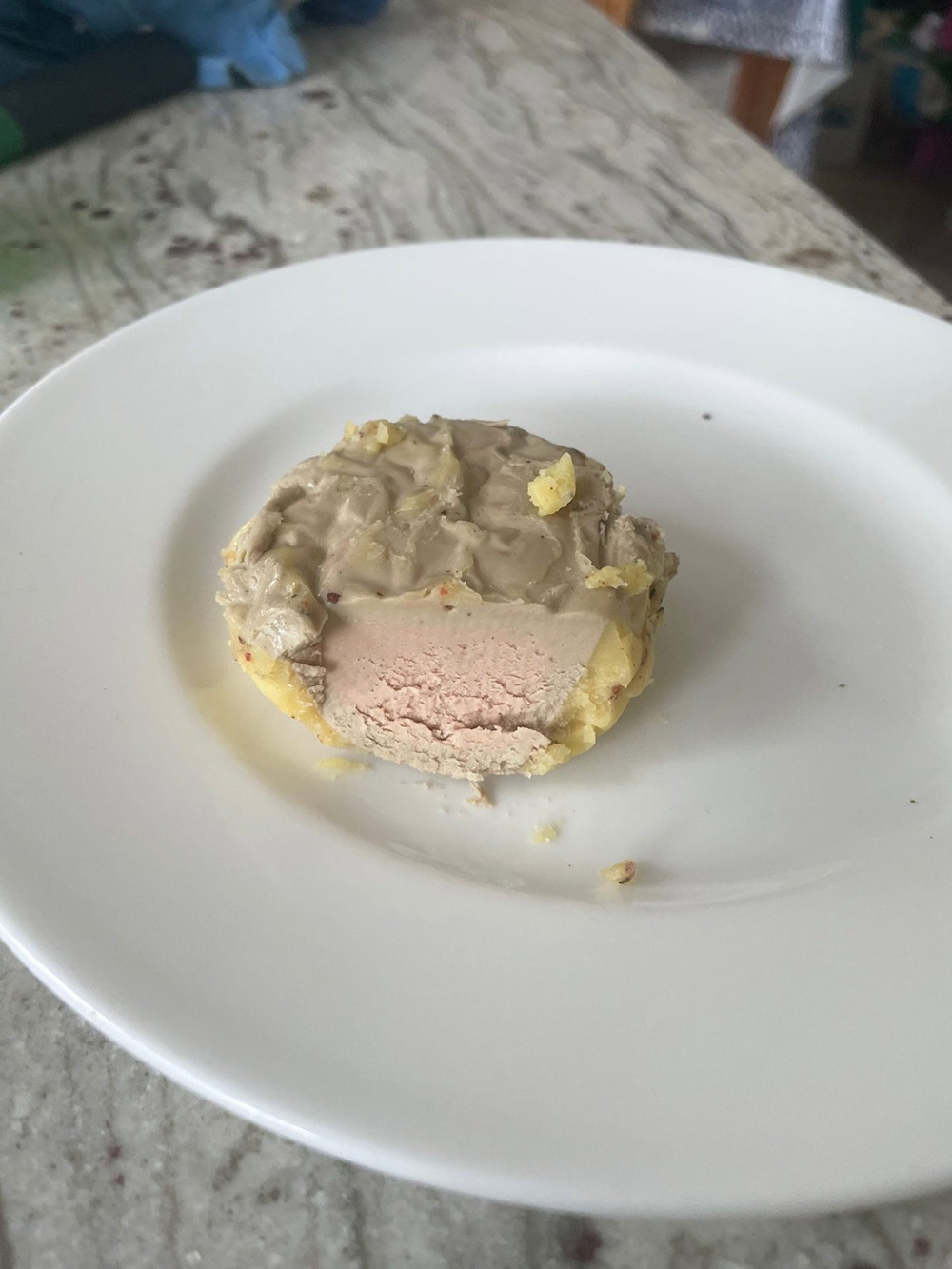让鹅肝生产不再“惨无人道”。
在对鸭肝、鹅肝的实验室培养技术、工艺进行优化完善之后,总部位于巴黎的初创企业——Gourmey公司做出了如是承诺。(如果你对其业务没有概念,)不妨将其设想为米其林级别的Memphis Meats(细胞培养肉公司,现在名为Upside Foods)。
7月14日,Gourmey宣布它已经筹集了1000万美元的额外风投资金。
法式鹅肝由鸭肝或鹅肝制作而成,长期以来一直被视为世上最惨无人道的食物之一,也是反对残忍食物的人士眼中的头号公敌。在饲养过程中,为了刺激鸭、鹅长出异常肥大、富含脂肪的肝脏,农场主会对鸭、鹅进行“填鸭式”喂养,并且每过一段时间就会进行一次断食,如此循环往复,在屠宰前最后几周,农场主甚至会将饲喂管直接插入鸭、鹅的喉咙之中。
包括英国在内,目前已经有17个国家明令禁止鹅肝的生产,英国也在考虑禁止从法国进口鹅肝。而在美国,加州已经于2004年通过禁令,禁止在该州生产这种口味绵密、细腻的食品(该禁令于2012年生效,自此之后便成了法庭的常客)。纽约市也将从明年开始禁止鹅肝的生产和销售。出于道德原因,许多顶级厨师已经主动选择将鹅肝从菜单中剔除。
而在以法式大餐闻名世界的法国,作为一种传统美食,法式鹅肝依然备受欢迎,在西班牙和日本其也很受消费者的追捧。从全球来看,法式鹅肝的市场规模每年可达20亿美元。
让“人造肉制品”走入更高的美食殿堂
Gourmey创立于2019年,作为Gourmey的联合创始人及首席执行官,尼古拉斯•莫兰-福雷表示,自己希望证明,实验室制造的肉制品“不仅能够用于制作汉堡”,还可以在“高级美食”中占据一席之地。考虑到法式鹅肝与法式大餐的紧密联系,莫兰-福雷选择将其作为公司首款产品。他很清楚,随着多地禁止生产和销售法式鹅肝,许多顶级厨师已经开始寻找替代产品,这为“人造鹅肝”提供了现成的市场。
市场营销出身的莫兰-福雷很明白,如果其初创企业能够在实验室中成功生产出“法式鹅肝”,那么该公司将获得大量的免费宣传,在法国更将一举成名。此外,Gourmey也有望获得顶级厨师、餐厅的认可和背书。
根据法国法律的规定,“法式鹅肝”专指经由“填鸭喂养法”喂养出来的鸭子、鹅的肝脏制品。因此,在自己的祖国,Gourmey将无法称其产品为“法式鹅肝”,而是将以“家禽美食”之名进行市场推广。
Gourmey是全球20多家试图不使用动物、单纯利用动物蛋白生产各种食品的初创企业之一。其他此类企业还有总部位于加州的行业先锋——Upside Foods、同样位于加州的Mission Barns、以色列的Aleph Farms和中国的先锋肉类(Avant Meats)等等。这种技术为“零残忍”小牛肉等食品的出现提供了可能,甚至“人造犹太培根”或许有朝一日都有可能出现在我们的餐桌之上。
并非只有动物权利主义者希望人类停止通过养殖动物生产蛋白质,许多关心气候变化的人士也持有相同观点。牲畜是温室气体的重要排放来源,不仅奶牛可以直接排放甲烷,为提供放牧所需的牧场、种植饲料作物所需的农场,许多原本能够捕获二氧化碳的树木和森林也都遭到了砍伐和焚毁。不仅如此,学界普遍认为,使用抗生素治疗家畜疾病是出现“超级细菌”的主要原因之一。
美味的价格
莫兰-福雷指出,选择售价相对高昂的“法式鹅肝”切入市场并非Gourmey偶然为之,而是经过战略考量的结果。(由于“人造肉”成本较高),选择法式鹅肝可以让该公司的产品获得一定的价格竞争力,让该公司更有机会在相当的价位与农场生产出的产品同台竞技。对于其他以大众食品(例如Upside Foods率先推出的汉堡包、鸡胸肉产品和初创企业Eat Just发明的鸡块产品)为目标的“人造肉”而言,价格竞争力不足正是其潜在的致命弱点。消费者虽然从道德上会对人造蛋白质产品表示支持,但在高昂的售价面前也难免会打退堂鼓。
Gourmey计划先使用与法式鹅肝“系出同源”的鸭子、鸡或火鸡蛋干细胞生产其他禽类制品,然后在此基础之上最终打造一条覆盖全品类的“人造肉”产品线。

7月14日,正值法国国庆日假期之际,Gourmey宣布已经从Point Nine、Air Street Capital、Heartcore、Partech、Big Idea Ventures、Eutopia Ventures、Ataraxia和Beyond Investing等风投公司获得了1000万美元的额外风投资金。
莫兰-福雷称,公司计划使用这笔资金对其法式鹅肝产品进行优化,并将在巴黎市中心建设生产设施,开始批量生产。他说:“我们希望通过行动表明,肉制品能够在城市中心,也就是其消费市场进行生产。”Gourmey还计划雇佣更多的食品工程师和生物学家,将员工数量从20人增加到至少30人。
要想销售自家产品,该公司需要通过多国审批,而其中许多地方甚至尚未制订有关“人造肉”的认证标准。莫兰-福雷表示,Gourmey将首先寻求在美国获批上市销售,然后将把目标放在对法式鹅肝等美食需求日益飙升的亚洲国家(新加坡已经批准Eat Just的人造鸡肉上市销售),最后是欧盟国家。他希望从2022年年底或2023年年初开始,该公司的产品可以通过世界各地的优质食品经销商和餐厅行销全球。
在实验室打造细腻口感
与莫兰-福雷共同创建该公司的维克托•萨尤和安托万•达维多夫(Antoine Davydoff)分别是分子生物学家和细胞生物学家,通过从鸭蛋中提取的干细胞制造法式鹅肝就是他们的想法。立项之初,他们就很清楚,打造法式鹅肝那种细腻、绵密的口感和风味绝非易事,只是他们也没有料到难度竟然如此之大。
莫兰-福雷称:“产品研发过程异常艰难。”公司必须弄清楚在“填鸭式”喂养的过程中,鹅肝、鸭肝在分子层面发生了怎样的变化。他说:“由于积累的脂肪过多,肝脏细胞濒临崩裂。”
虽然Gourmey能够通过研究农场主饲养鸭子和鹅时所使用的玉米和大豆来了解其蛋白质、脂质成分,进而设计、制造与之相匹配的成分来饲养肝细胞,但这只可以部分复制相关过程,不能获得与农场生产的鹅肝相当的风味和质地。

因此,该公司只得对法式鹅肝中的所有化合物进行仔细分析,确定影响其口味、外观和质感的化合物究竟是哪些,然后再尝试利用植物油进行复制,并与实验室培养的肝细胞进行结合。莫兰-福雷表示:“从最开始到我们找到满意的原型版本,一共做了差不多600到650种化合物交互作用实验。”
那么他们的产品怎么样呢?就Gourmey送给我的试吃样品来看,其外观有些奇怪:肉饼呈冰球大小,浅棕色,肉饼的饼身有一层黄色脂肪,不过味道却与真品一般无二。至少就我的品味而言,这块粉褐色鹅肝的味道、质地与农场生产的鹅肝并无差别,味道也确实不错。
莫兰-福雷指出,在研发出法式鹅肝之后,Gourmey的下一个目标将是鸭胸肉,随后可能进入鸡柳市场。等着吃“人造鸡翅全家桶”的消费者可能还要再耐心等等了。(财富中文网)
译者:梁宇
审校:夏林
让鹅肝生产不再“惨无人道”。
在对鸭肝、鹅肝的实验室培养技术、工艺进行优化完善之后,总部位于巴黎的初创企业——Gourmey公司做出了如是承诺。(如果你对其业务没有概念,)不妨将其设想为米其林级别的Memphis Meats(细胞培养肉公司,现在名为Upside Foods)。
7月14日,Gourmey宣布它已经筹集了1000万美元的额外风投资金。
法式鹅肝由鸭肝或鹅肝制作而成,长期以来一直被视为世上最惨无人道的食物之一,也是反对残忍食物的人士眼中的头号公敌。在饲养过程中,为了刺激鸭、鹅长出异常肥大、富含脂肪的肝脏,农场主会对鸭、鹅进行“填鸭式”喂养,并且每过一段时间就会进行一次断食,如此循环往复,在屠宰前最后几周,农场主甚至会将饲喂管直接插入鸭、鹅的喉咙之中。
包括英国在内,目前已经有17个国家明令禁止鹅肝的生产,英国也在考虑禁止从法国进口鹅肝。而在美国,加州已经于2004年通过禁令,禁止在该州生产这种口味绵密、细腻的食品(该禁令于2012年生效,自此之后便成了法庭的常客)。纽约市也将从明年开始禁止鹅肝的生产和销售。出于道德原因,许多顶级厨师已经主动选择将鹅肝从菜单中剔除。
而在以法式大餐闻名世界的法国,作为一种传统美食,法式鹅肝依然备受欢迎,在西班牙和日本其也很受消费者的追捧。从全球来看,法式鹅肝的市场规模每年可达20亿美元。
让“人造肉制品”走入更高的美食殿堂
Gourmey创立于2019年,作为Gourmey的联合创始人及首席执行官,尼古拉斯•莫兰-福雷表示,自己希望证明,实验室制造的肉制品“不仅能够用于制作汉堡”,还可以在“高级美食”中占据一席之地。考虑到法式鹅肝与法式大餐的紧密联系,莫兰-福雷选择将其作为公司首款产品。他很清楚,随着多地禁止生产和销售法式鹅肝,许多顶级厨师已经开始寻找替代产品,这为“人造鹅肝”提供了现成的市场。
市场营销出身的莫兰-福雷很明白,如果其初创企业能够在实验室中成功生产出“法式鹅肝”,那么该公司将获得大量的免费宣传,在法国更将一举成名。此外,Gourmey也有望获得顶级厨师、餐厅的认可和背书。
根据法国法律的规定,“法式鹅肝”专指经由“填鸭喂养法”喂养出来的鸭子、鹅的肝脏制品。因此,在自己的祖国,Gourmey将无法称其产品为“法式鹅肝”,而是将以“家禽美食”之名进行市场推广。
Gourmey是全球20多家试图不使用动物、单纯利用动物蛋白生产各种食品的初创企业之一。其他此类企业还有总部位于加州的行业先锋——Upside Foods、同样位于加州的Mission Barns、以色列的Aleph Farms和中国的先锋肉类(Avant Meats)等等。这种技术为“零残忍”小牛肉等食品的出现提供了可能,甚至“人造犹太培根”或许有朝一日都有可能出现在我们的餐桌之上。
并非只有动物权利主义者希望人类停止通过养殖动物生产蛋白质,许多关心气候变化的人士也持有相同观点。牲畜是温室气体的重要排放来源,不仅奶牛可以直接排放甲烷,为提供放牧所需的牧场、种植饲料作物所需的农场,许多原本能够捕获二氧化碳的树木和森林也都遭到了砍伐和焚毁。不仅如此,学界普遍认为,使用抗生素治疗家畜疾病是出现“超级细菌”的主要原因之一。
美味的价格
莫兰-福雷指出,选择售价相对高昂的“法式鹅肝”切入市场并非Gourmey偶然为之,而是经过战略考量的结果。(由于“人造肉”成本较高),选择法式鹅肝可以让该公司的产品获得一定的价格竞争力,让该公司更有机会在相当的价位与农场生产出的产品同台竞技。对于其他以大众食品(例如Upside Foods率先推出的汉堡包、鸡胸肉产品和初创企业Eat Just发明的鸡块产品)为目标的“人造肉”而言,价格竞争力不足正是其潜在的致命弱点。消费者虽然从道德上会对人造蛋白质产品表示支持,但在高昂的售价面前也难免会打退堂鼓。
Gourmey计划先使用与法式鹅肝“系出同源”的鸭子、鸡或火鸡蛋干细胞生产其他禽类制品,然后在此基础之上最终打造一条覆盖全品类的“人造肉”产品线。
7月14日,正值法国国庆日假期之际,Gourmey宣布已经从Point Nine、Air Street Capital、Heartcore、Partech、Big Idea Ventures、Eutopia Ventures、Ataraxia和Beyond Investing等风投公司获得了1000万美元的额外风投资金。
莫兰-福雷称,公司计划使用这笔资金对其法式鹅肝产品进行优化,并将在巴黎市中心建设生产设施,开始批量生产。他说:“我们希望通过行动表明,肉制品能够在城市中心,也就是其消费市场进行生产。”Gourmey还计划雇佣更多的食品工程师和生物学家,将员工数量从20人增加到至少30人。
要想销售自家产品,该公司需要通过多国审批,而其中许多地方甚至尚未制订有关“人造肉”的认证标准。莫兰-福雷表示,Gourmey将首先寻求在美国获批上市销售,然后将把目标放在对法式鹅肝等美食需求日益飙升的亚洲国家(新加坡已经批准Eat Just的人造鸡肉上市销售),最后是欧盟国家。他希望从2022年年底或2023年年初开始,该公司的产品可以通过世界各地的优质食品经销商和餐厅行销全球。
在实验室打造细腻口感
与莫兰-福雷共同创建该公司的维克托•萨尤和安托万•达维多夫(Antoine Davydoff)分别是分子生物学家和细胞生物学家,通过从鸭蛋中提取的干细胞制造法式鹅肝就是他们的想法。立项之初,他们就很清楚,打造法式鹅肝那种细腻、绵密的口感和风味绝非易事,只是他们也没有料到难度竟然如此之大。
莫兰-福雷称:“产品研发过程异常艰难。”公司必须弄清楚在“填鸭式”喂养的过程中,鹅肝、鸭肝在分子层面发生了怎样的变化。他说:“由于积累的脂肪过多,肝脏细胞濒临崩裂。”
虽然Gourmey能够通过研究农场主饲养鸭子和鹅时所使用的玉米和大豆来了解其蛋白质、脂质成分,进而设计、制造与之相匹配的成分来饲养肝细胞,但这只可以部分复制相关过程,不能获得与农场生产的鹅肝相当的风味和质地。
因此,该公司只得对法式鹅肝中的所有化合物进行仔细分析,确定影响其口味、外观和质感的化合物究竟是哪些,然后再尝试利用植物油进行复制,并与实验室培养的肝细胞进行结合。莫兰-福雷表示:“从最开始到我们找到满意的原型版本,一共做了差不多600到650种化合物交互作用实验。”
那么他们的产品怎么样呢?就Gourmey送给我的试吃样品来看,其外观有些奇怪:肉饼呈冰球大小,浅棕色,肉饼的饼身有一层黄色脂肪,不过味道却与真品一般无二。至少就我的品味而言,这块粉褐色鹅肝的味道、质地与农场生产的鹅肝并无差别,味道也确实不错。
莫兰-福雷指出,在研发出法式鹅肝之后,Gourmey的下一个目标将是鸭胸肉,随后可能进入鸡柳市场。等着吃“人造鸡翅全家桶”的消费者可能还要再耐心等等了。(财富中文网)
译者:梁宇
审校:夏林
Foie gras without the guilt.
That’s the promise of a Paris-based startup called Gourmey that has perfected the science and art of creating lab-grown duck and goose liver. Think Memphis Meats (now called Upside Foods) for the Michelin-star set.
On July 14, Gourmey announced it has raised $10 million in additional venture funding.
Foie gras, which is made from duck or goose liver, has long been public enemy No. 1 among those concerned about the animal cruelty inherent in the human food chain. That’s because, to prod the birds’ bodies into growing extremely large and fatty livers, farmers alternately starve and then force-feed the animals, including inserting a tube down their throats, in the final weeks before they are slaughtered.
Production of foie gras has been outlawed in 17 countries, including the U.K., which is also considering prohibiting foie gras from being imported from France. In the U.S., California passed a ban in 2004 on producing the rich, creamy pâté in the state (the ban, which went into effect in 2012, has been in and out of court since). And the delicacy is poised to become illegal in New York City starting next year. Many top chefs have also voluntarily opted to remove foie gras from their menus on ethical grounds.
But the product remains very popular in France, where it is closely associated with the country’s world-renowned culinary tradition, as well as in Spain and Japan. Globally, the sale of foie gras is a $2 billion per year industry.
Going beyond burgers
The fact that foie gras is so closely associated with France’s haute cuisine is one of the reasons Gourmey’s founders wanted to take it on as their first product after the company was launched in 2019. Nicolas Morin-Forest, Gourmey’s cofounder and CEO, says he wanted to prove that lab-grown meat could “go beyond burgers” and play a role in “gastronomy.” He also knew that the ban on the production or sale of foie gras in many places created a ready market, with many top chefs actively looking for an alternative.
Morin-Forest, who has a background in marketing, also knew that if his startup managed to create lab-cultured foie gras, it could garner a lot of free publicity, especially in France, and the company would be able to count on the endorsement of top chefs and restaurants.
Of course, Gourmey can’t actually call its product “foie gras” in France. That appellation is reserved, by law, for the substance produced from the livers of force-fed geese. So in the startup’s native land, it will market the product as simply a “poultry delicacy.”
Gourmey is one of about two dozen young companies around the world seeking to grow various kinds of food using animal proteins, but without the animals. Alongside Upside Foods, the California-based pioneer in the industry, are companies like Mission Barns, also in California, Aleph Farms, in Israel, and Avant Meats, in China. The technology opens avenues for foods such as cruelty-free veal and even, just maybe, kosher bacon.
And it’s not just those who care about the ethical treatment of animals who are eager to see an end to the use of farmed animals to produce protein. So too are many people interested in combating climate change. Livestock contribute greatly to greenhouse gas production, both directly from the methane emitted by cows, and also because carbon dioxide–trapping trees and forests are cut down and burned to create land for grazing and to grow feed crops. What’s more, the antibiotics used to treat livestock are seen as a leading factor in the growth of antibiotic-resistant superbugs.
Delicacy price point
The fact that foie gras is a relatively expensive delicacy was part of Gourmey’s strategic calculus: It meant the company would have a better chance of creating a product that would achieve price parity—or at least be price competitive—with foie gras produced from farmed animals, Morin-Forest says. Price competitiveness is a potential Achilles’ heel for other lab-grown meats that have targeted mass-market foods, such as hamburgers and chicken breasts (which are the first markets that Upside Foods is tackling) or chicken nuggets (which startup Eat Just created), as consumers are likely to balk at paying a hefty premium, despite the ethical arguments in favor of lab-grown protein.
Gourmey plans to eventually produce a full range of lab-grown meats, starting with other poultry products that can be produced using the same stem cell lines, harvested from duck, chicken, or turkey eggs, as the foie gras.
On Juky 14, just in time for France’s Bastille Day holiday, the startup announced that it has received $10 million in additional funding from a group of venture capital firms that include Point Nine, Air Street Capital, Heartcore, Partech, Big Idea Ventures, Eutopia Ventures, Ataraxia, and Beyond Investing.
Morin-Forest says the company plans to use the money to perfect its foie gras and build a production facility in central Paris to begin producing it in larger quantities. “We want to show that meat can be produced in the heart of the cities where it is consumed,” he says. “We want a very short path from ‘cell-cultivator to fork.’” Gourmey also plans to hire more food engineers and biologists, expanding its workforce from about 20 to at least 30.
To sell its product, the company will need regulatory approval in various countries around the world, and many of those places have yet to establish protocols for certifying lab-grown meat. Morin-Forest says Gourmey will seek approval to sell in the U.S. first, followed by Asia, where demand for delicacies like foie gras is soaring and where Singapore has already approved the sale of Eat Just's lab-grown chicken, and finally the European Union. He hopes to deliver the product through fine-food distributors and restaurants worldwide starting in late 2022 or early 2023.
Creating creamy texture in a lab
Morin-Forest’s cofounders, Victor Sayous, a molecular biologist, and Antoine Davydoff, a cell biologist, surmised foie gras could be created from poultry stem cells harvested from duck eggs. But they knew it would be difficult to match the delicate flavor and creamy texture of foie gras. Just how difficult, even they underestimated.
“It was an exceptionally hard process,” Morin-Forest says. The company had to figure out what was happening molecularly in the livers of the birds when they are being force-fed. “The liver cells are almost exploding because they have to accumulate so much lipids,” he says.
While the startup can replicate some of this in the way it grows its liver cells in the lab by feeding the cells proteins and lipids designed to match those found in the corn and soy that farmers feed their ducks and geese, that alone was not enough to match the flavor and texture of farmed foie gras.
So the startup then had to do careful analysis of all the compounds present in foie gras to figure out exactly which ones were responsible for which aspects of the product’s taste, look, and feel, and then try to replicate those with plant-based oils and fats, which it combines with the lab-cultured liver cells. “It took about 600 to 650 different compound interactions from the start until we found a satisfying prototype version,” Morin-Forest says.
How did they do? A sample that Gourmey sent me to try looked a bit funny—a round patty about the size of a hockey puck, light brown in color and topped with a layer of yellow fat—but it smelled and tasted just like the real McCoy. The flavor and texture of the pinkish-taupe liver pâté was, to my palate at least, indistinguishable from the farm-produced stuff and, well, delicious.
Having figured out foie gras, Gourmey’s next target, Morin-Forest says, is duck magret. It then might move down-market into chicken fillets. Those waiting for the lab-grown bucket of wings, however, may have to be patient.






